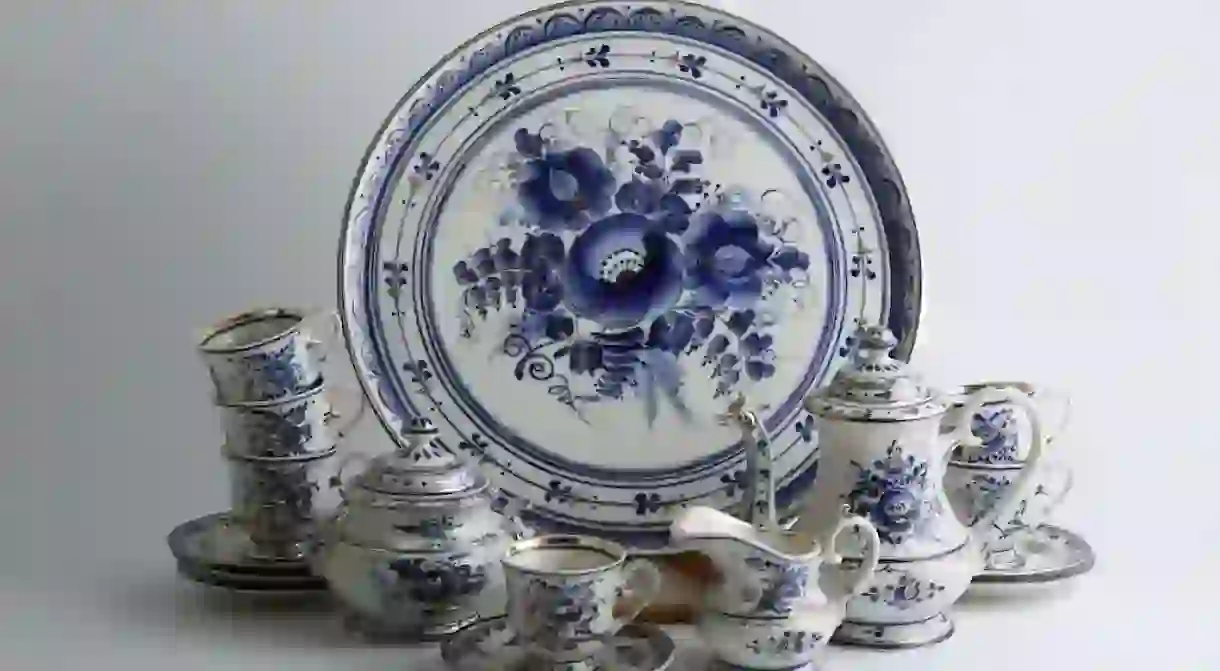A Buyer's Guide to Gzhel Porcelain

The blue-and-white Gzhel porcelain might be among the first things you consider buying when shopping for souvenirs in Russia. These beautifully designed and elaborately crafted pieces are one of those few only-in-Russia souvenirs that rival even furry Ushanka hats. However, beware that there’s a risk of purchasing fakes. Here are some tips from Gzhel manufacturers to be sure you bring home an original.
Did you know – Culture Trip now does bookable, small-group trips? Pick from authentic, immersive Epic Trips, compact and action-packed Mini Trips and sparkling, expansive Sailing Trips.
The history of Gzhel porcelain began early in the 18th century, when private manufactures, who were scattered around the clay-rich region not far from Moscow, started producing porcelain pieces. After the revolution of 1917, the private workshops and factories were appropriated by the Soviet state and united as a ceramics guild in Turygino Village, about 60 kilometers from Moscow.

After WWII, the manufactures were in a miserable state and couldn’t resume porcelain production. There probably wouldn’t be any Gzhel porcelain today if not for Natalia Bessarabova, a sculptor and artist who revived the centuries-old artistic tradition. In 1972, the Turygino porcelain factory and other ceramics manufacturers in the region morphed into Union Gzhel, which cherishes its unique legacy producing original handcrafted Gzhel porcelain. Turygino Village is also home to the world’s largest museum of Gzhel ceramics, which houses more than 2,000 pieces.

Despite common misconception, the Gzhel color palette is not restricted to blue and white. The trademark two-color style was established due to lack of coloring materials during the post-war years. When Bessarabova set about reviving the art, she turned these limitations into opportunities and used cobalt, the cheapest colorant available. However, today there are plenty of multi-colored Gzhel pieces, which are valued as much as the two-color.

To this day, every piece of Gzhel porcelain is made entirely by hand and bears one of two trademarks: either a double-headed eagle with the word Gzhel (Гжель) or an oval Gzhel logo and the stamp “Handmade in Russia”. Any other stamps or marks mean that you’re holding a forged copy. Original Gzhel is only made of porcelain, there’s no such thing as faience Gzhel. However, sometimes Gzhel commissions limited collections from fabrics and precious metals. Apart from popular dinnerware and common household items, Gzhel produces true pieces of art, which can be found in esteemed museum collections all over the world.

If you want to get an original Gzhel, be sure to buy only from authorised resellers. When in Moscow, you can shop at Russkaya Galereya, or visit the factory shop in Turygino Village. If you happen to find Gzhel porcelain someplace else, look for the trademarks, and ask for the Gzhel partner certificate.














